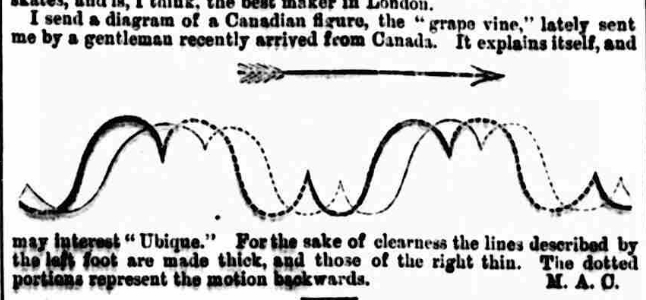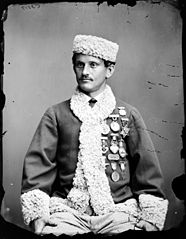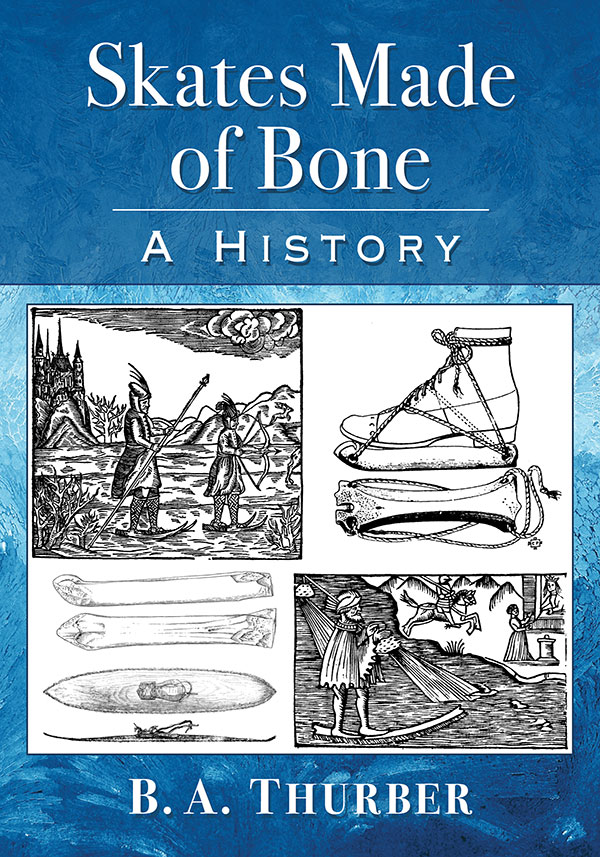The grapevine is a move that goes back to the middle of the nineteenth century but has mostly been forgotten by figure skaters today. It still survives outside of figure skating.
On December 21, 1867, this move became known to the skaters of England through a diagram and brief description in The Field, the newspaper of choice for skaters of that time.

A few years later, T. Maxwell Witham described his experience learning the grapevine from this diagram.
I learned the grape vine by simply taking a diagram that had been sent to me from Canada (unaccompanied by any description) … and forcing my feet to follow the turns and curves. By this means I acquired the action, and subsequent practice made it go.
T. Maxwell Witham, “The Grape Vine,” The Field, December 30, 1871, 581.
Other skaters were perplexed, and he tried to help them by appending a rather long and confusing explanation. A quarter-century later, he implied that grapevines were worthwhile even though they were not “pure skating.”
Although it will have become apparent to my readers that I am a great advocate for pure skating, as exemplified by long-sustained efforts on one or the other foot, yet it would be absurd to ignore the beauties of the two-foot figures which are known to most figure-skaters as “the grape-vines.”
T. Maxwell Witham, A System of Figure Skating, 5th ed. (London: Horace Cox, 1897), 182.
His attitude toward “pure skating” lingers in competitive figure skating. The Rulebook requires to skaters to minimize their two-footed skating (rules 6091 and 8072(A)(3)), so you won’t find grapevines in figure skating programs today. But you can find them elsewhere: in freestyle skating on inline skates. The technique is a bit different because the skates are, but you can see how nicely grapevines move.
This was the first of many grapevines to perplex skaters. Because these moves were skated on two feet, they were difficult to explain in words and pictures. Today, videos make communicating tricks much easier.
References
The 2020 Official U.S. Figure Skating Rulebook. 2019. Colorado Springs: U.S. Figure Skating.
M. A. C. 1867. “Club Figures—The Grapevine, &c.” The Field, December 21, 1867, 511.
T. Maxwell Witham. 1871. “The Grape Vine.” The Field, December 30, 1871, 581.
T. Maxwell Witham. 1897. A System of Figure Skating, 5th ed. London: Horace Cox, 1897.










